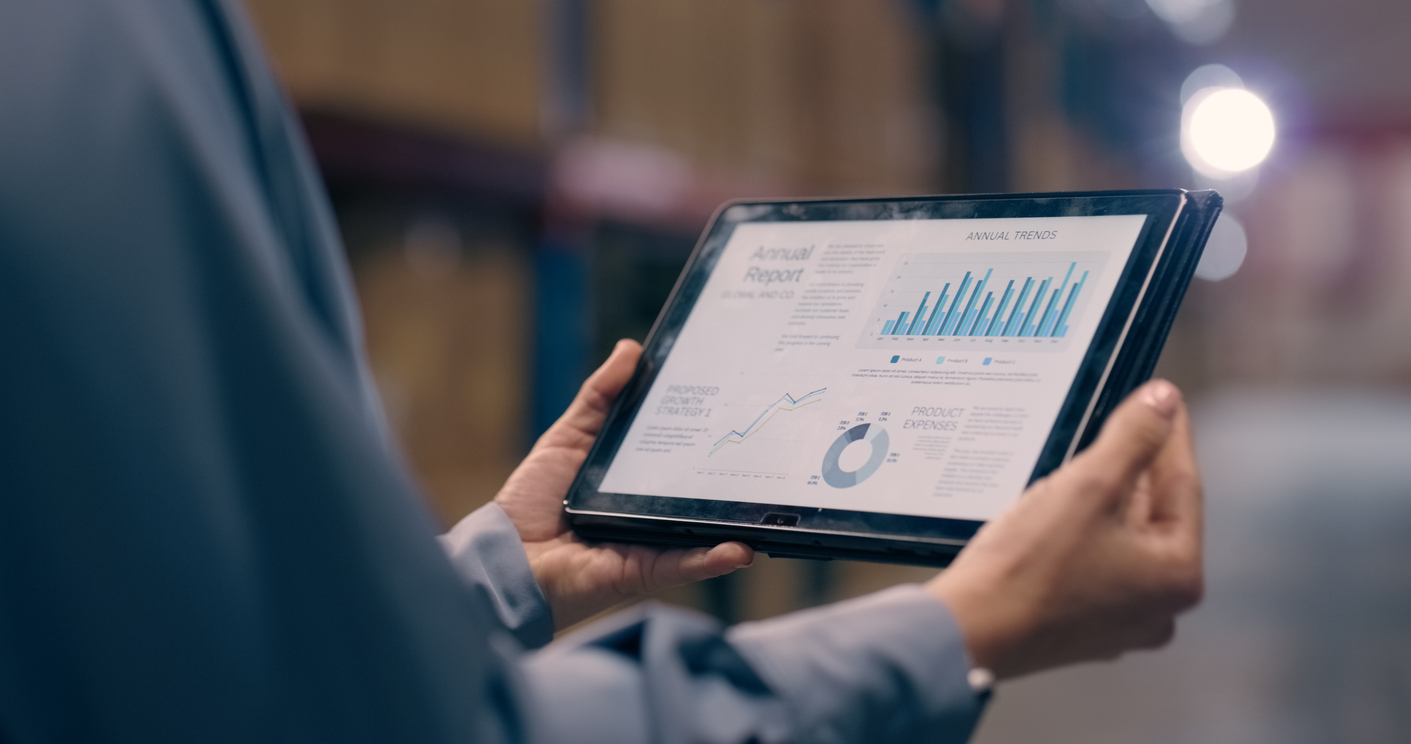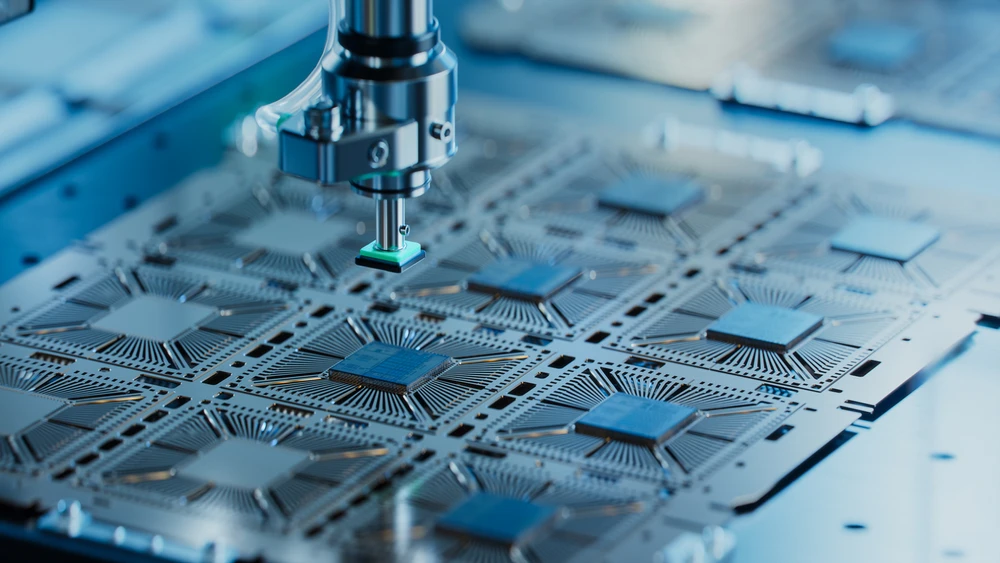9 Digital Transformation Trends in Manufacturing for 2025
Discover the future of digital transformation trends for manufacturing and learn how advanced CPQ can optimize your production.

The manufacturing sector is transforming as it continues to embrace new technological advancements and adapt to an increasingly complex and dynamic market. Digital technologies are reshaping nearly all facets of manufacturing, enabling companies to enhance operational efficiency, meet the diverse needs of their customers, and remain competitive.
What is Digital Transformation?
Digital transformation is the integration of digital technologies into all aspects of a business to change its operation and offer more value to customers. It involves utilizing tools such as artificial intelligence (AI), the Internet of Things (IoT), data analytics, and cloud computing to streamline processes, enhance decision-making, and create new opportunities for growth and innovation.
In manufacturing, digital transformation involves shifting from traditional industry methods to advanced, data-driven solutions that improve efficiency and agility. Companies may leverage IoT-based predictive maintenance, robotics for automation, and real-time data analytics to enhance productivity and reduce downtime.
The use of Configure, Price, Quote (CPQ) software in the manufacturing sector is among the top digital transformation trends forecasted for 2025. With these tools in their arsenals, sales teams can automatically generate quotes for their products and services, eliminating errors, saving time, and enhancing customer experiences.
Read on to discover the nine trends in digital transformation influencing the application of CPQ tools in the manufacturing industry.
9 Digitalization Trends in Manufacturing CPQ Software
Many business owners in the manufacturing sector can agree that CPQ systems are no longer just tools for automated pricing. They have now evolved into comprehensive platforms that streamline operations, boost customer service, and drive strategic growth. These are the key trends shaping the use of CPQ software in manufacturing and their impact on business operations and customer interactions.
1. CAD and CPQ Systems
In 2025, CAD automation with CPQ software could transform how manufacturers approach product customization. Traditionally, designing customized products required a back-and-forth process between sales, engineering, and production teams. This increased the likelihood of delays and potential errors. However, CAD and CPQ systems are accelerating the process.
But how exactly does this integration work? Well, CPQ software is equipped with CAD capabilities to allow sales teams to capture customer requirements during the product configuration process. Then, these specifications are automatically fed into the CAD system, generating precise CAD drawings without manual intervention. Thus, every configuration aligns with engineering constraints, reducing the chances of making design errors.
For example, an industrial machinery manufacturer using an integrated CAD-CPQ system can offer customers real-time adjustments to their configurations. When a buyer specifies changes to a machine’s dimensions, the system will automatically update the CAD drawings and provide an instant quote, allowing them to enjoy tailored solutions.
2. AI and Machine Learning
Expect AI and machine learning (ML) to enhance the CPQ process in 2025. Today, we have AI-driven CPQ Analytics solutions that scrutinize vast amounts of customer data, including purchase history, preferences, and industry trends, to recommend product configurations matching a customer’s needs and thus speed up the sales process. Meanwhile, ML algorithms assess market trends, competitor pricing, and historical sales data. Both technologies help to determine optimal pricing strategies, allowing companies to balance competitiveness with profitability.
3. Visual Product Configuration
The increased use of visual configuration tools within CPQ software also makes the list of exciting transformation trends for 2025. These tools leverage advanced 3D rendering to allow customers to interact with digital models of their desired products in real-time. Customers can rotate, zoom, and customize every detail of a product, from dimensions and materials to colors and add-ons.
Incorporating visual product configuration into CPQ systems reduces the likelihood of errors in product specifications. The software enforces rules and constraints during the configuration process, ensuring that all selections are feasible and compliant with manufacturing capabilities.
In addition, visual product configuration tools enhance customer engagement by making the sales process more interactive and enjoyable. Customers may feel more invested in a purchase when they can see the tangible representation of the product they want. The emotional connection created during visual product configuration, combined with the precision and transparency offered by the tools, often leads to higher conversion rates and increased customer satisfaction.
4. Intelligent Automation
The increased adoption of Intelligent automation (IA) is among the many digital transformation trends on the horizon. These technologies, which include artificial intelligence, ML, robotic process automation (RPA), and data analytics, streamline and optimize workflows and decision-making.
Remember, IA goes beyond basic automation. They incorporate cognitive capabilities as well, enabling systems to learn, adapt, and respond to complex scenarios. In addition, the technologies can seamlessly connect CPQ systems with manufacturing execution systems (MES) and enterprise resource planning (ERP) platforms to ensure that orders flow directly from customer interaction into production.
5. Decentralized Manufacturing
Decentralized manufacturing is a production strategy where manufacturing operations are distributed across multiple locations instead of being centralized in a single facility. In 2025, these decentralized operations are set to increase, especially with the use of CPQ software that facilitates accurate product configuration and quoting across different regions. CPQ solutions will promote the following:
- Standardization Across Facilities: CPQ tools will enable manufacturers to maintain uniformity in product specifications and pricing across multiple sites, regardless of geographical or operational differences.
- Real-Time Collaboration: Cloud-based CPQ solutions will allow teams across various facilities to access the same data, ensuring faster responses to customer inquiries.
- Localized Customization: Decentralized manufacturing thrives on meeting localized customer preferences. With CPQ software, companies will quickly adapt to regional demands while maintaining global standards.
Global manufacturers like Tesla and Siemens are among those that have embraced decentralized manufacturing to meet market requirements and improve supply chain efficiency. With CPQ tools, more companies could join them in the near future.
6. Sustainability in Manufacturing
Sustainability will continue to be a major focus for manufacturers in 2025, driven by growing regulatory pressures, consumer demand for eco-friendly products, and the global urgency to address climate change. We expect more companies to integrate and utilize cutting-edge technologies to minimize environmental impact while increasing profitability.
The adoption of digitalization tools like CPQ software could be one of the most common strategies used to promote sustainability. Since it provides precise product configurations that fit customers’ requirements, it eliminates the need for guesswork in production. Manufacturers can produce exactly what is ordered, reducing surplus inventory and material waste, which aligns with sustainability goals.
7. Smart Factories and Supply Chains
In 2025, the manufacturing industry will enter a new era where smart factories and digitally optimized supply chains will become essential to maintain competitiveness. Smart factories leverage digital tools for monitoring, predictive maintenance, and autonomous operations. Similarly, supply chains powered by digitalization ensure transparency, resilience, and efficiency. When both are integrated with CPQ software, they can:
- Promote dynamic pricing based on real-time production costs, material availability, and energy consumption.
- Help manufacturers to ensure accurate delivery timelines and reduce errors in order processing, enhancing customer satisfaction.
- Allow for scalable, low-volume production runs.
Siemens, for instance, has implemented IoT-enabled smart factory solutions, integrating real-time data with CPQ systems to guarantee customized and efficient production.
8. Dark Factories
Dark factories are not entirely new, but their adoption could increase in 2025. These facilities operate without the need for human presence, relying entirely on advanced robotics, AI, and IoT systems to run production lines 24/7. The term “dark factory” itself originates from the concept that no human workers are required, so lighting is unnecessary.
These dark factories often rely on CPQ tools to bridge customer demands with autonomous capabilities. The software translates customer requirements into detailed manufacturing instructions, which are fed directly into automated systems to aid customization.
Furthermore, CPQ solutions integrated with IoT systems allow manufacturers to adjust production parameters dynamically. For example, a sudden change in material availability or customer specifications can be reflected instantly in the manufacturing process.
One company operating a dark factory is Fanuc in Japan. Its robots are assembled autonomously by other robots, showcasing the concept’s full potential. Other organizations will undoubtedly embrace these factories in the future.
9. Upskilling Employees
As digital tools transform the manufacturing industry, upskilling employees is becoming essential for staying competitive. This trend is driven by the wave of retirements from experienced workers who are taking decades of institutional knowledge with them. Meanwhile, newer employees often lack expertise in complex configurations, creating a knowledge gap. 2025 will reflect this as more companies prioritize upskilling to prepare their workers to adapt to a changing market.
Introducing CPQ software into their operations may help workers simplify and streamline their work. By automating complex configurations and centralizing knowledge, CPQ systems reduce reliance on seasoned employees while helping newer team members get up to speed quickly. These tools provide data-driven analytics, automated configurations, and seamless integrations with CAD systems to deliver real-time design validation. Companies could also implement tailored training programs and utilize e-learning platforms.
According to McKinsey & Company, the time employees spend utilizing advanced technological skills will increase by up to 50% through 2030, and investing in upskilling now ensures manufacturers are ready for this shift. In 2025, upskilling is more than training – it’s about empowering employees to work smarter, not harder. By embracing CPQ software as part of the upskilling strategy, businesses can bridge the knowledge gap, future-proof their operations and thrive in an industry that’s becoming more digital.
The Role of CPQ Software in Digital Transformation
CPQ software has set the foundation for the future of digital manufacturing, enabling companies to meet the growing demand for customization, speed, and accuracy. In addition, these tools minimize errors and accelerate the quote-to-cash (QTC) cycle. Their integration with enterprise systems like customer relationships management (CRM) and enterprise resource planning (ERP) allows manufacturing companies to create a unified, data-driven ecosystem that aligns sales and production teams.
Breaking down the role of CPQ software in the future of digital transformation in manufacturing might look something like this:
- Streamlining Sales Processes: CPQ software will simplify the complex and time-consuming task of generating accurate quotes for highly configurable products. Ensuring all product configurations meet engineering, pricing, and manufacturing constraints will eliminate the need for manual checks, saving time.
- Reducing Errors: CPQ software could minimize errors in the field by automating complex processes, promising accurate configurations, and standardizing pricing and quoting procedures.
- Improving the QTC Cycle: CPQ software may improve the QTC process by reducing approval times with built-in approval workflows to ensure that only quotes requiring special attention are routed for managerial approval, speeding up the process.
CPQ solutions will be central to the manufacturing industry’s digital transformation future. From improving sales processes and QTC cycles to minimizing errors, the software will be a must-have for companies striving to outshine competitors while satisfying customer needs in 2025 and beyond.
Transform Your Business with Tacton
Digital transformation is the future of manufacturing, and CPQ software is an integral part of the change. As manufacturers aim to deliver customized solutions to their customers, advanced CPQ tools like Tacton can empower their sales teams with intelligent automation, seamless integration, and dynamic visualization capabilities.
Tacton is a recognized leader in Gartner’s Magic Quadrant for CPQ Application Suites, thanks to our innovative approach to simplifying configuration and driving operational excellence. Adopting our cutting-edge solutions can enable you to stay competitive and attain your unique business objectives.
Request a demo to see how Tacton CPQ software can benefit your sales teams and prepare your operation for the future of manufacturing.



